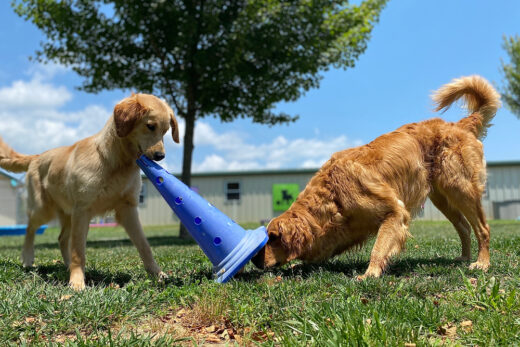Two of the most popular New Year’s resolutions people have for themselves are losing weight and living healthier. Although dogs can’t make resolutions for themselves, we as their trusted parents can take an appraisal to make some changes for them.
With over 50% of pets reportedly falling into the category of being overweight or obese according to the Association for Pet Obestiy Prevention (APOP), it’s no surprise that weight loss and healthy digestion is going to be top of the resolution list for many pup parents.
Pets maintained at a healthy weight live longer and have fewer health complications as they age, including arthritis and mobility issues, and the chronic inflammation brought about by excess fat in the body.
Food choices and questions about digestion are among the most common and popular lines of questioning veterinarians get during pet visits. In this article, we’ll discuss 5 tips to get you started on fulfilling a New Year’s resolution of weight and dietary health for your dog.
Know Your Dog’s Calorie Needs
Just like with us, knowing how much food is okay requires knowing how many calories are okay per day. The most successful weight loss plans for people involve figuring out your calorie needs depending on your body condition, lifestyle, and health needs. This is very much the same for pets.
Not sure what’s normal for your dog? Make sure to ask your vet at your pup’s next appointment. If it’s not coming up for awhile, check out this ideal dog weight list by breed at APOP’s website.
Then, to get a rough idea of calorie needs per day that your pup needs, check out this chart of Dog and Cat Daily Calorie Needs from APOP. At the very bottom of the weight chart, you’ll find some helpful guidelines on how to approach helping your pup to lose those pounds.
The formula included helps you to calculate your dog’s specific needs. Since formulas and math can be confusing, make sure to double check with your vet, who can help you calculate and determine calorie needs based on the age and activity level of your pup.
Once you know the calories, how do you use them? Whatever your dog’s calorie needs are determined to be either based on the chart or through doing the calculation yourself, take this number of kilocalories per day and divide it by the calories listed on your dog’s package of food. This will give you how many cups, cans, pouches, etc. to feed per day.
If you home cook for your dog, this makes things more challenging, as you will need to figure out how many calories are found in each ingredient you use to ensure your dog is getting the right amount. This can be one important reason to seek help from a board certified veterinary nutritionist to help you with formulation and calorie amounts for home-made diets.
Exercise is important for sure, but it provides far better benefits for other aspects of health, like good muscle tone, cardiovascular health, and general happiness. Many folks make the mistake of believing they can take their dog for an extra walk to lose the weight while keeping dietary habits the same. Unless you plan to get your dog into highly athletic events like sporting or agility, that extra fifteen minute walk is unlikely to help significantly with weight loss.





